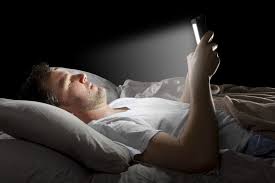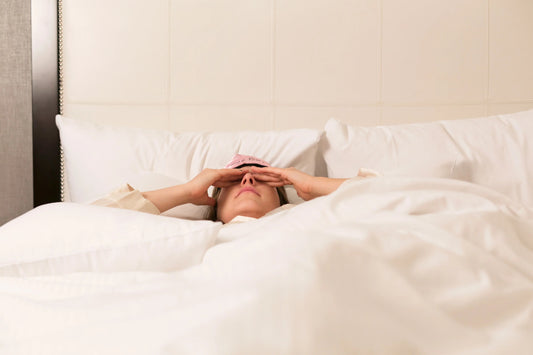In our increasingly digital world, electronics have become a significant part of our daily lives. From smartphones and tablets to computers and televisions, screens surround us and often accompany us into the bedroom. While these devices serve various purposes—keeping us connected, entertained, and informed—they can also have profound effects on our sleep quality. This blog post will explore how daily usage of electronics and their proximity to the bed can impact sleep and offer strategies to foster healthier sleep habits.
Daily Usage of Electronics
Recent statistics show that the average American spends over seven hours a day on screens, whether for work, entertainment, or socializing. The average for the rest of the world is about 20 minutes less. This extensive screen time can significantly affect sleep, particularly when it occurs during the hours leading up to bedtime.
One of the primary concerns related to electronic use before bed is the suppression of melatonin, the hormone responsible for regulating sleep. Exposure to blue light emitted from screens can interfere with the body’s natural circadian rhythms, delaying sleep onset. Research indicates that even a short exposure to blue light in the evening can reduce melatonin production, making it harder to fall asleep. As a result, many individuals find themselves lying in bed, wide awake, scrolling through their devices instead of drifting off into restful sleep.
Moreover, increased screen time can lead to reduced sleep duration. With the lure of social media, streaming services, and online gaming, it’s easy to lose track of time. Late-night device usage often leads to people getting fewer hours of sleep than needed, which can have various negative effects on physical and mental health, including mood disturbances, cognitive impairment, and weakened immune function.
Another issue is sleep fragmentation caused by notifications and alerts. Many people keep their devices close by while they sleep, leading to disruptions from incoming messages, calls, or notifications. This constant connectivity can interrupt the natural sleep cycle, preventing deep and restorative sleep.
Proximity of Electronics to the Bed
Keeping electronics within arm's reach while sleeping can exacerbate these sleep issues. The proximity of devices can create a psychological impact that extends beyond the physical effects of blue light. The mere presence of a smartphone or tablet can create an association with work, stress, and the outside world, making it difficult to relax and unwind before sleep.
Furthermore, there are growing concerns about electromagnetic fields (EMFs) emitted by electronic devices. While research on the long-term effects of EMF exposure is still ongoing, some studies suggest that prolonged exposure may lead to various health issues, including sleep disturbances. Although the scientific community has not reached a consensus on the dangers of EMFs, minimizing exposure, especially during sleep, is a precaution worth considering.
To improve sleep quality, consider adjusting your bedroom setup. Aim to keep devices out of the bedroom or at least away from the bed. Establishing a “tech-free” zone an hour before bedtime allows the mind to wind down and prepare for sleep without the distractions of electronics. This change can help create a more peaceful sleep environment, fostering better relaxation and deeper sleep.
Strategies for Healthy Electronics Use
To mitigate the impact of electronics on sleep, it’s essential to adopt mindful usage habits. Here are several strategies to help you strike a balance between staying connected and ensuring restful sleep:
-
Set Boundaries: Designate specific times for electronic use, particularly in the evening. By setting clear boundaries, you can enjoy the benefits of technology without sacrificing sleep quality.
-
Use Blue Light Filters: Many devices now come with built-in blue light filter settings, or you can download apps that adjust the screen's color temperature. Utilizing these features can help reduce blue light exposure in the evening and support melatonin production.
-
Establish a Relaxing Bedtime Routine: Create a calming pre-sleep ritual that replaces screen time. Consider reading a physical book, practicing relaxation techniques such as deep breathing or meditation, or listening to soothing music. These activities can help signal to your body that it’s time to wind down, making it easier to transition into sleep.
-
Limit Notifications: If you must keep your devices nearby, turn off non-essential notifications during the night. This simple step can minimize sleep disruptions and help you stay focused on rest.
-
Consider Your Environment: Create a sleep-conducive environment by ensuring your bedroom is dark, quiet, and cool. Incorporating blackout curtains, white noise machines, or fans can contribute to a more restful atmosphere.
Conclusion
The relationship between electronics and sleep is complex and increasingly relevant in today’s digital age. Being mindful of your daily usage and the proximity of devices to your bed can significantly impact your sleep quality. By understanding the effects of electronics on sleep and adopting healthier habits, you can create a more peaceful and restorative sleep environment.
Taking actionable steps towards reducing screen time and fostering a calming bedtime routine can lead to improved sleep quality, better overall health, and enhanced well-being. As you navigate the digital landscape, remember that your sleep should always take priority. Prioritize your sleep hygiene, and enjoy the benefits of restful nights and refreshed mornings.





